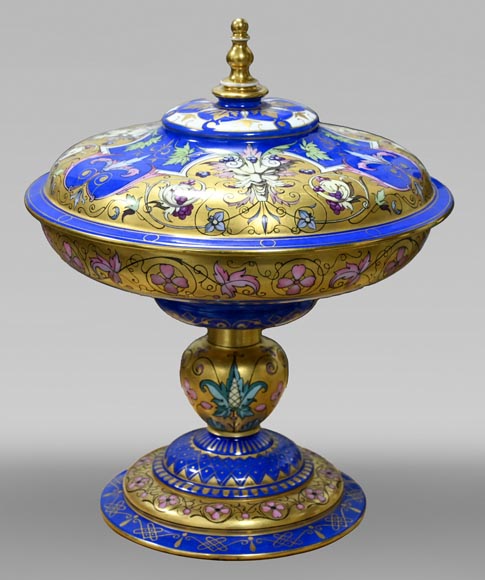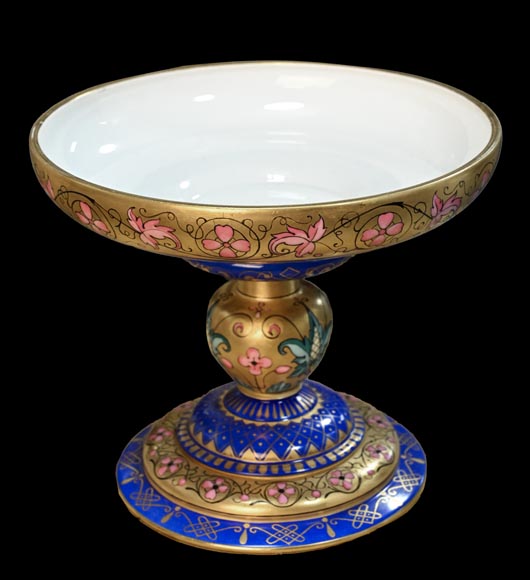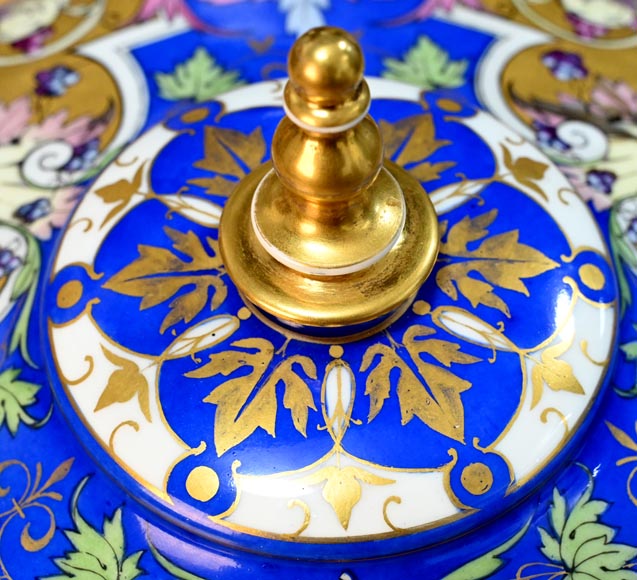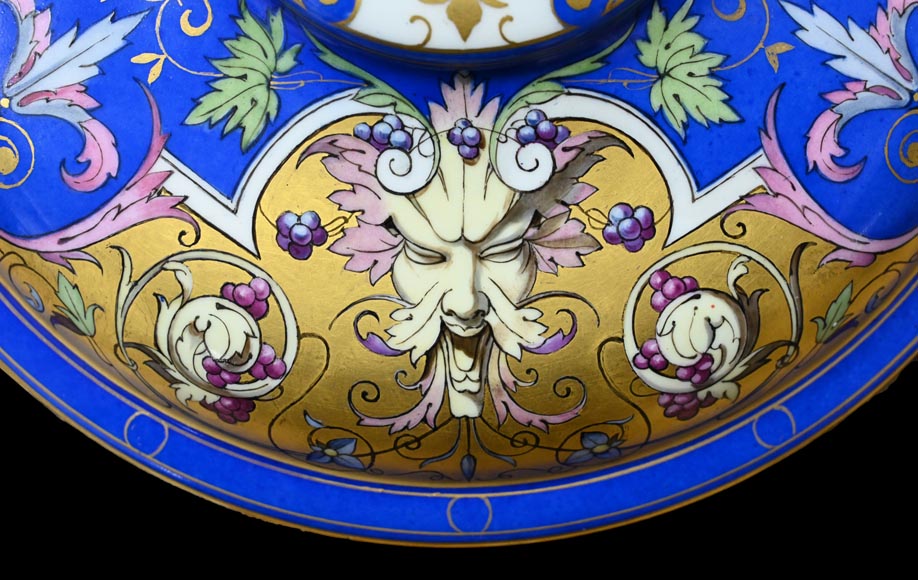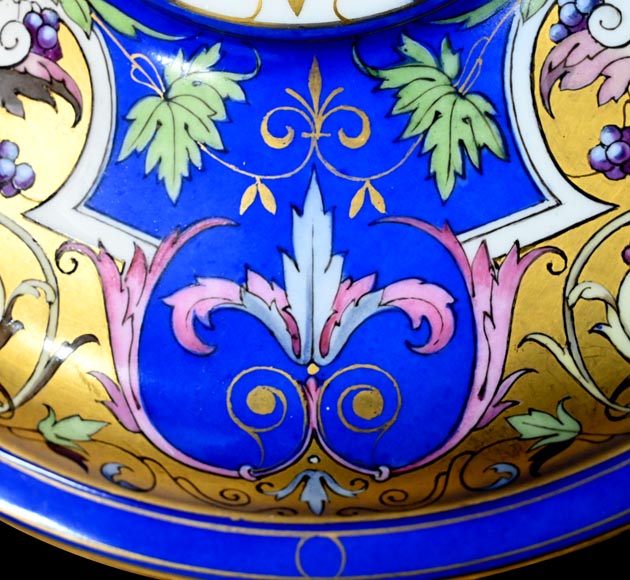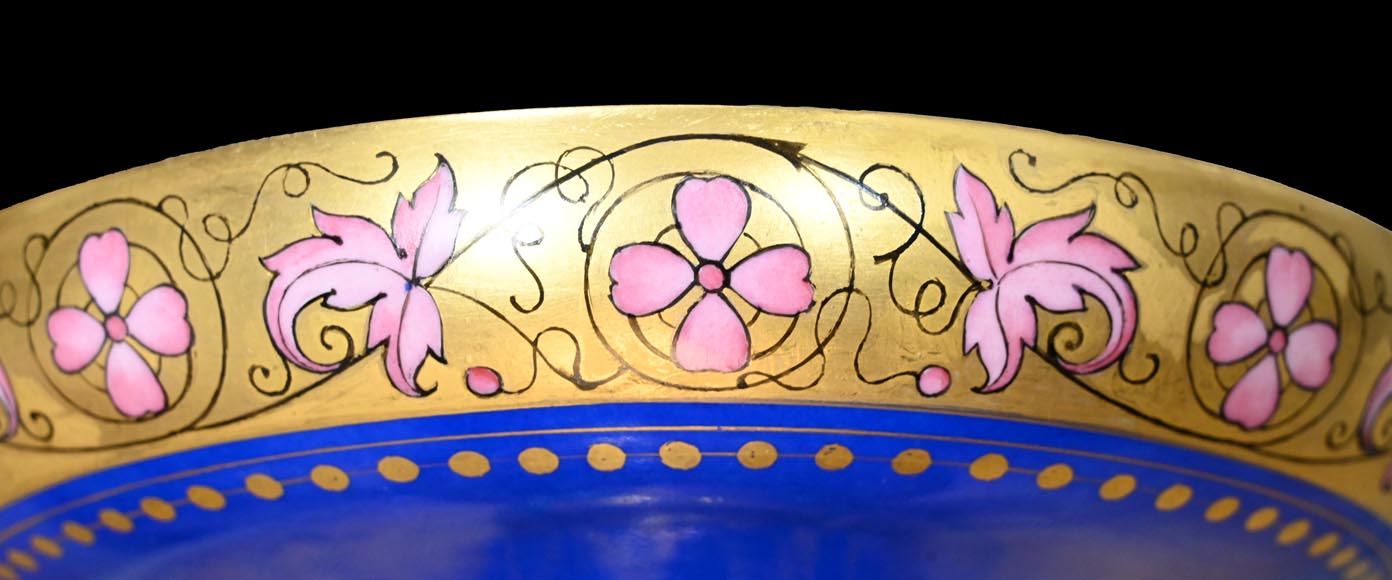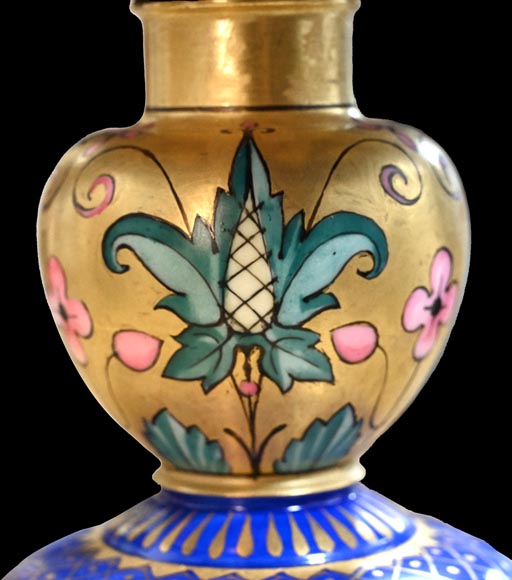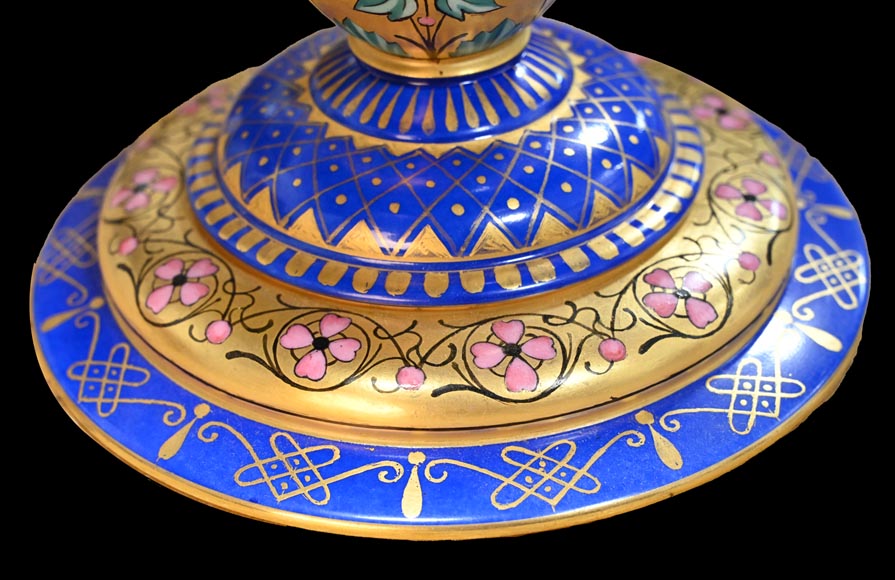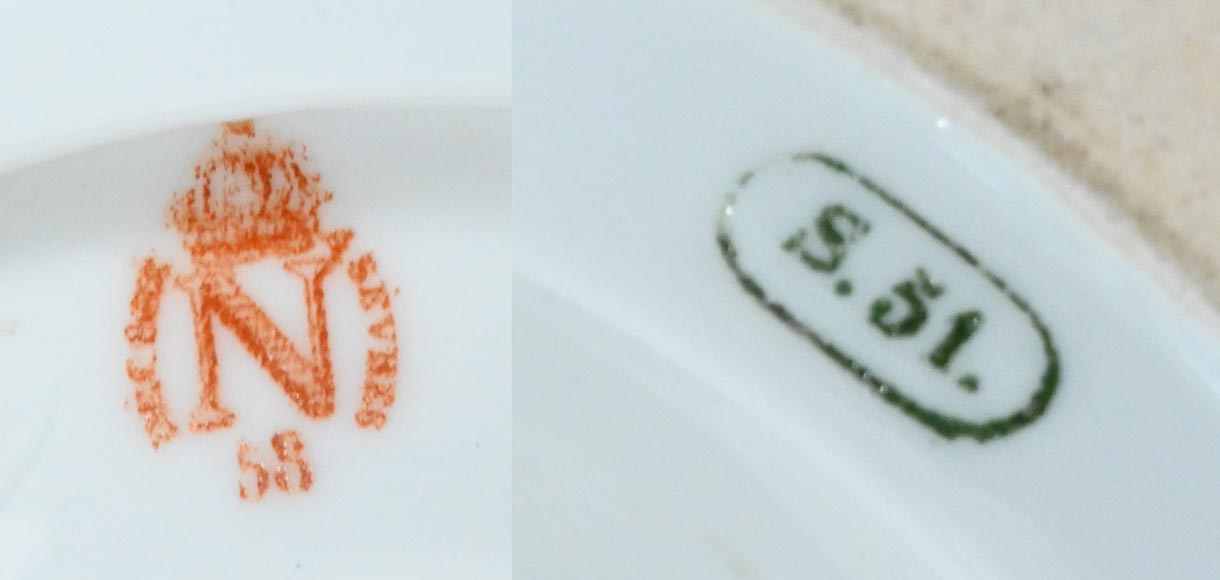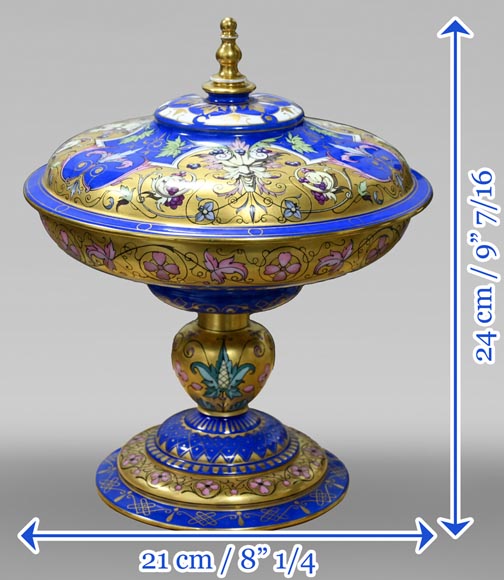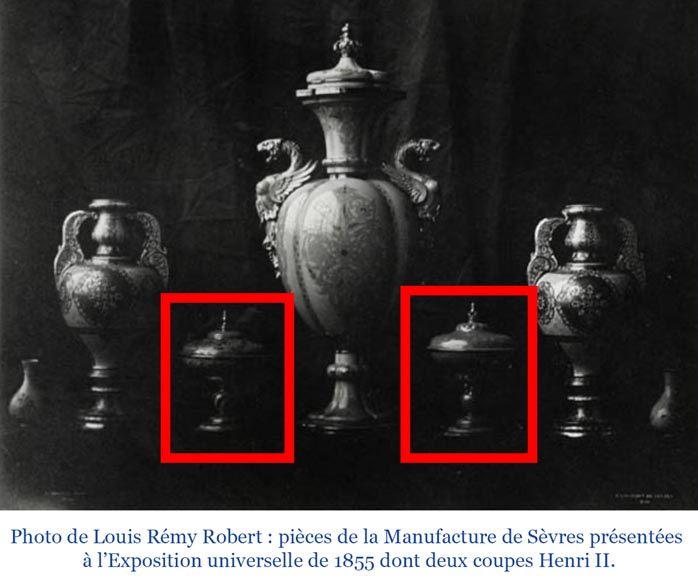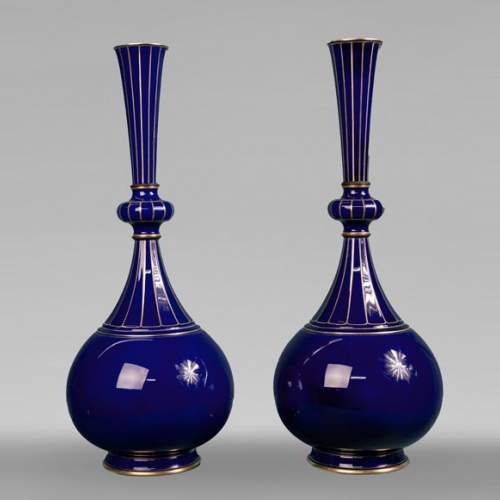Style Other / Ref.15692
Henry II Cup from the Sèvres Manufactory
Dimensions
Height 9'' ½ 24cm
diameter: 8'' ¼ 21cm
The Vincennes factory, the forerunner of the Sèvres factory, was founded in 1740 by workers who had transferred from the Chantilly factory. The Vincennes factory became royal in 1752, shortly before its transfer to Sèvres in 1756. In 1759, Louis XV became the main investor and placed it under the control of the Crown. The discovery of kaolin by two of its researchers in 1768 enabled the royal establishment to produce pieces of genuine porcelain (known as hard porcelain). Between 1800 and 1847, the factory was directed by the scholar Alexandre Brongniart, who ensured its exceptional growth. The factory then continued its evolution to the present day, where it remains a unique center of creativity.
Sèvres is known for having developed a multitude of innovative shapes and styles. It was with this in mind that between 1832 and 1888 the Manufacture turned to productions with 14th-16th century decorations to meet the neo-Renaissance taste of the 19th century. Among these numerous creations, we can find the so-called "Henri II" cups, produced between 1841 and 1868. A model was even presented at the Universal Exhibition of 1855. This same example was purchased by Colin Minton Campbell who, three years later, took over the British ceramics factory from his uncle, Thomas Minton. That same year, 1858, under the impetus of the new owner of the factory, the artistic director and chemist Léon Arnoux succeeded in reproducing the Henri II techniques. Indeed, it was precisely in these 1850s that Victorian manufacturers attempted to reproduce the complex techniques of Henri II earthenware, also called Saint-Porchaire or Oiron earthenware, in which Sèvres excelled. The purchase of Minton in 1855 is therefore not insignificant since it surely served as a French model for the British factory.
Informations
Price: on request
Recommended for you :
Dimensions:
Height: 56
Diameter: 24
Dimensions:
Height: 116
Diameter: 48
Dimensions:
Width: 44
Depth: 25
Dimensions:
Height: 8
Diameter: 35
Dimensions:
Height: 17
Diameter: 11
Dimensions:
Height: 8
Diameter: 41
Dimensions:
Width: 26
Height: 17
Depth: 15
Dimensions:
Height: 113
Diameter: 58
Dimensions:
Diameter: 60
Dimensions:
Width: 38
Height: 25
Depth: 14
Dimensions:
Height: 20
Diameter: 37



